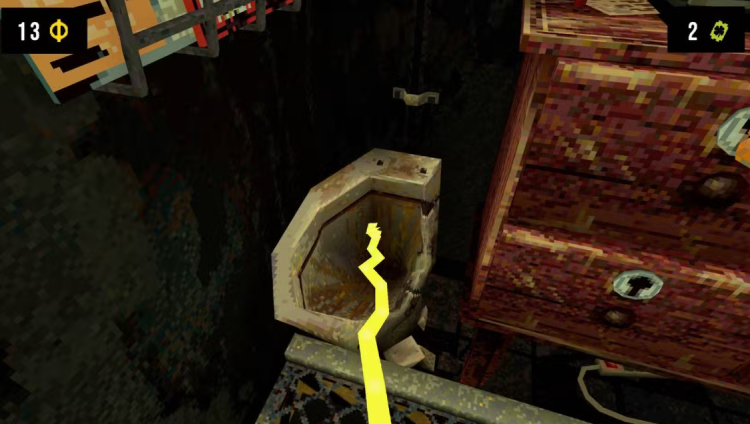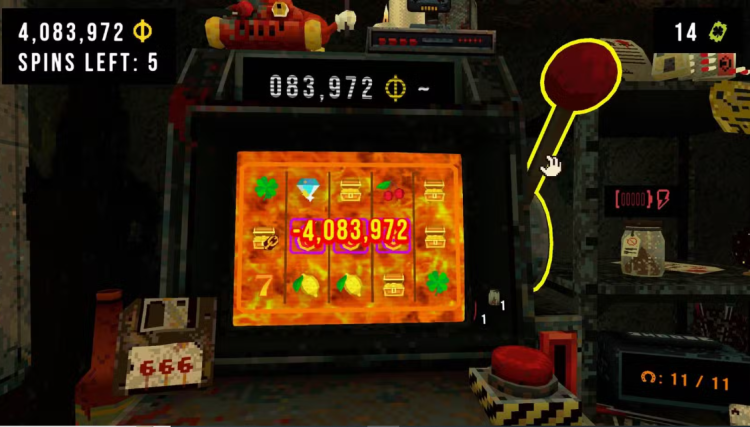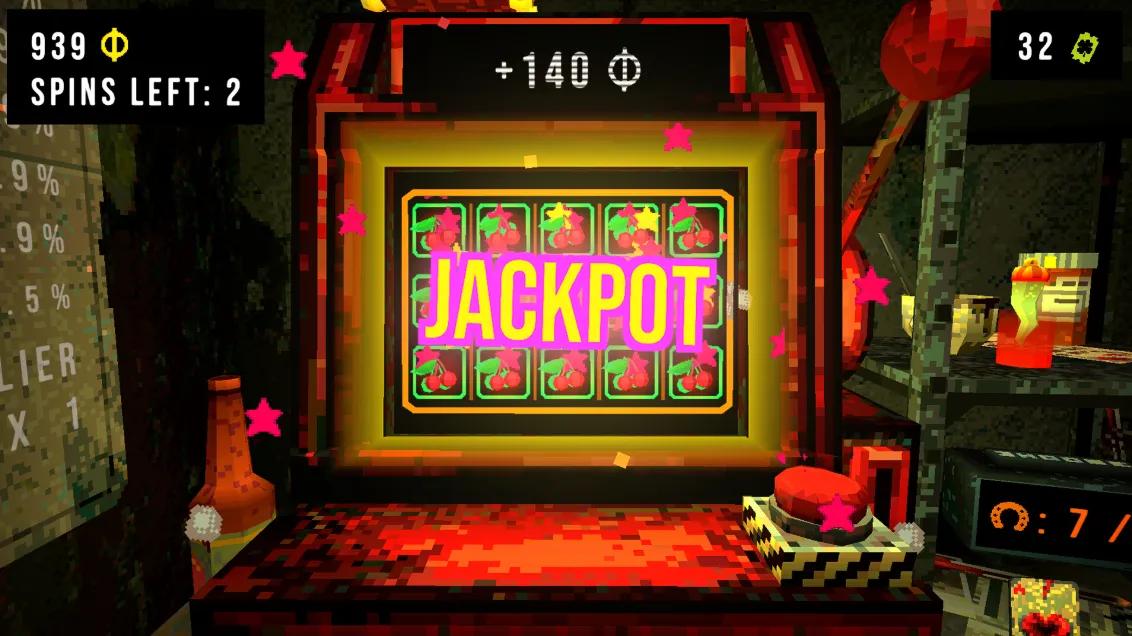CloverPit forvandler Balatros roguelike spenning til en fortvilelsens fangehull
Panik Arcade’s CloverPit begins like a grim parody of Balatro. The same gambling-roguelike rhythm drives its core, but the presentation replaces playful absurdity with something close to ritualistic torment. A nameless captor locks the player in a dungeon, forcing endless spins on a slot machine until a target score is met. Fail to do so within a few rounds, and the floor gives way to an abyss.
It’s an unsettling premise — less about strategy, more about the suffocating mood that frames it. The dealer’s voice in Balatro was mischievous; here, the unseen figure has a menace that recalls Buckshot Roulette’s gun-wielding host or Saw’s Jigsaw. Each pull of the lever feels loaded with consequence, the environment itself complicit in your anxiety. The single overhead bulb, the corroded toilet, the bin filled with polygonal body parts — all make the room a grotesque caricature of confinement. You can even urinate or defecate in the broken toilet, gestures that underline the game’s fascination with degradation.
CloverPit borrows its visual grammar from PS1 horror: sharp angles, static lighting, the kind of texture compression that turns shadows into stains. Every corner feels damp, unfinished, and intentionally dated. The choice isn’t nostalgia; it’s unease. Looking down at the trapdoor beneath you triggers a fisheye effect that warps the space, as if perception itself can’t be trusted. Glance too long, and the scene tilts toward vertigo.
The game’s loop — pull the slot, chase the “deadline” score, survive another round — would be trivial without this atmosphere. Yet the room reacts to your progress. The floor shudders after every spin. The phone on the wall shrieks to announce a new target. Deadlines, as the game calls them, are more than goals; they are reminders that the space itself is watching, waiting to drop you into its pit.
Earlier, we covered CloverPit on the demo version stage. Now it's available as a complete game.
Victory yields a key and the chance to open one of four drawers. Inside might be a “charm,” the game’s answer to Balatro’s jokers, or something worse: mangled limbs. These “corpse pieces” alter your run, offering higher rewards at the cost of added risk. They’re mechanically useful, but also serve as storytelling devices, each suggesting what happens when the captor grows impatient.
A strange contradiction sits at the center of CloverPit. Each failure ends with your implied death, yet you return, memories intact, greeted again by the same voice. The continuity hints at something more than death — maybe replication, maybe imprisonment beyond flesh. Like any good roguelike, it allows persistence through ruin, but here that persistence feels existentially wrong.

Image credit: Polygon
The slot machine itself lacks the agency of Balatro’s poker-based system. Slots are pure chance, their rhythm mechanical rather than strategic. That imbalance — between skill and surrender — is the point. You aren’t supposed to master CloverPit. You’re supposed to endure it. Even success feels provisional, as though survival is merely a postponement of collapse.
At the edge of the room, next to the shrieking phone, a locked door waits. Its purpose is never made explicit. Maybe escape lies behind it; maybe the door only opens to reveal another version of the same cell. The game’s endings, buried beneath layers of obscure puzzles and counterintuitive logic, suggest that liberation requires self-sabotage — that winning may mean unlearning how to play.

Image credit: Polygon
Viewed as design, CloverPit doesn’t rival Balatro’s depth. It can’t. But it doesn’t need to. Its appeal lies in how it transforms a gambling loop into psychological pressure, turning randomness into dread. Each failed spin feels heavier, as if the machine itself were deciding your fate rather than a random number generator.
It’s hard to imagine a more fitting release for October. The game’s simplicity — one room, one machine, one captor — makes it ideal for brief, uneasy sessions. Play it on a handheld, late at night, with headphones on, and the illusion completes itself. Panik Arcade’s creation doesn’t just borrow Halloween aesthetics; it embodies them, fusing monotony and menace until they’re indistinguishable.
CloverPit isn’t trying to replace Balatro. It’s content to lurk beneath it, whispering through static, waiting for you to pull the lever one more time.


Kommentarer